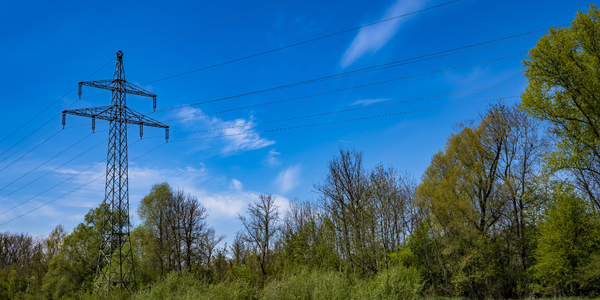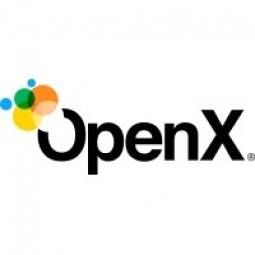公司规模
Large Corporate
国家
- Worldwide
产品
- MediaMath TerminalOne
- OpenX Bidder
技术栈
- Header Bidding
实施规模
- Enterprise-wide Deployment
影响指标
- Customer Satisfaction
- Brand Awareness
技术
- 平台即服务 (PaaS) - 连接平台
适用功能
- 销售与市场营销
用例
- 需求计划与预测
服务
- 数据科学服务
关于客户
本案例研究中的客户是希望通过广告活动覆盖更广泛受众的买家。这些买家通常是希望最大程度地扩大覆盖范围并确保不错过任何用户的广告商。他们有兴趣接触那些对顶级品牌表现出良好行为的高价值用户。这些买家很可能是覆盖范围广泛的大公司,因为他们正在使用 MediaMath 的 TerminalOne 和 OpenX 的 Bidder 等先进工具来增强其广告策略。他们很可能在全球范围内开展业务,因为这项研究涉及来自 OpenX Ad Exchange 的大量广告请求样本。
挑战
标头竞价是发布商页面上的一种流行集成,在调用发布商的广告服务器之前,它会将每次展示展示给程序化需求。它通常被认为是一种供应方工具,可帮助发布商创造更多竞争并了解其库存的真正价值。然而,标头竞价对买方的好处却很少被讨论。它为发布商和交易平台提供了卓越的技术集成,以访问有价值的库存。它还可以让买方能够接触到他们无法通过标准交易平台标签从发布商那里充分接触到的用户。MediaMath 和 OpenX 联手为买方测试了标头竞价。
解决方案
OpenX 从 OpenX 广告交易平台抽取了 9 亿个广告请求样本,发现了大量独立用户和匹配用户(MediaMath 和 OpenX 均可识别的用户)。MediaMath 选择了一个“高价值”受众群体,该群体表现出对顶级品牌有利的行为(其成功通过 MediaMath TerminalOne 营销操作系统衡量)。然后,这些用户被映射到匹配用户中,从而产生高价值用户的子集。结果表明,标头竞价使广告商能够竞争出版商库存的更大份额,通常包括直接销售的库存。广告商可以通过 MediaMath 的 TerminalOne 平台访问支持 OpenX Bidder 的出版商,以接触他们以前无法有效接触的新用户。
运营影响
数量效益

Case Study missing?
Start adding your own!
Register with your work email and create a new case study profile for your business.
相关案例.
Case Study
Pepsico's Transformation to Smarter Sales Forecasting with Designer Cloud
PepsiCo, a global consumer packaged goods company, faced a significant challenge in calibrating sales forecasting to supply the right product quantities to its retailers. The sales forecast incorporated a variety of data, including warehouse data, store stock data, and promotional forecast data, all of which were provided by retailers in different file formats and delivered using various methods. The primary challenge was the speed of preparing a sales forecast. With the existing Microsoft Access and Excel-based processes, the time required to prepare this data was so extensive that analysts could only leverage it once a month or not at all. This inefficiency risked under or oversupplying retailers, potentially impacting PepsiCo's business operations and customer relationships.

Case Study
Gexa Energy and AutoGrid's Innovative Demand Response Programs in ERCOT
Gexa Energy, a leading retail electricity provider in Texas, was seeking to introduce new demand response programs for its commercial and industrial customers in the Electric Reliability Council of Texas (ERCOT) market. The challenge was to provide a platform that would allow these customers to lower their energy bills by adjusting their energy consumption during peak energy demand or high wholesale electricity prices. The solution needed to be intelligent, scalable, and offer both manual and automated options for adjusting energy consumption. The demand response programs needed to include Emergency Response Service (ERS), Real-Time Price Response (RTPR), and 4 Coincident Peak (4CP).

Case Study
ZettaNet's Agile Juniper Network Meets Booming Digital Demand in Australia
ZettaNet, a privately-held company based in Perth, Australia, was facing a significant challenge due to the exponential demand for enterprise network, data center, and cloud services in the region. The company's business growth necessitated an upgrade of their core network to meet the increasing bandwidth requirements of their customers. The customers, which primarily include managed service providers, were demanding 1 Gbps connectivity between locations. These service providers then deliver network, data center, cloud, and voice services to a diverse range of customers including local businesses, schools, hospitals, residential communities, and government offices in Western and Southern Australia. The challenge for ZettaNet was to meet this high-capacity network services demand while maintaining profitability.
Case Study
Procter & Gamble Implements Terra Technology's Demand Sensing for Improved Forecast Accuracy
Procter & Gamble (P&G) faced significant challenges in accurately forecasting short-term demand for their consumer products. Their existing 24-month forecast provided a good overview for monthly or weekly production, but it was insufficient for the immediate needs of supply chain planning and manufacturing teams. These teams required a short-term forecast to plan production effectively and avoid 'fire-fighting' practices. P&G needed a solution that could provide accurate short-term demand forecasts to ensure agility and flexibility in manufacturing, especially for products with very short production and order lead times. The company explored various solutions but found that most big software companies lacked the agility to meet their specific demand sensing needs. Terra Technology's Real-Time Forecasting, later known as Demand Sensing (DS), emerged as a promising solution due to its specialized focus on consumer packaged goods (CPG) demand planning and forecasting.
Case Study
MARS Incorporated: Leading a Global Digital Transformation
MARS Incorporated, a multinational manufacturer, faced significant challenges in digitizing and standardizing processes across its mid-markets globally. The company's reliance on legacy solutions necessitated continuous, time-consuming upgrades and made data compilation and comparison across different regions and business units difficult. Excel spreadsheets were extensively used for forecasting in smaller markets, leading to disconnected processes, siloed working environments, and increased risk of data inconsistencies and inaccuracies in demand forecasting. MARS also struggled with a lack of visibility across its midmarket footprint, scattered critical data across various systems and spreadsheets, a low degree of automation, and insufficient statistical analytics for demand planning. The absence of a standard process for demand planning made it challenging to consolidate KPIs and gain a comprehensive view of demand trends and supply chain performance.

Case Study
Enterprise AI for Demand Forecasting and Production Scheduling in Global Agribusiness
A global agribusiness and food manufacturer, producing over 80 million pounds of food products per year across eight production lines, faced significant challenges in demand forecasting and production scheduling. The company's only customer, a global retailer, exhibited highly variable demand, leading to discrepancies with the manufacturer's weekly demand forecast. Traditional demand forecasting solutions, based on statistical algorithms, were unable to cope with the short lead times and daily sales orders due to the short shelf life of food products. This resulted in unfulfilled customer orders. Additional rule-based solutions procured to improve production scheduling also failed to optimize schedules and significantly improve manufacturing operations.







